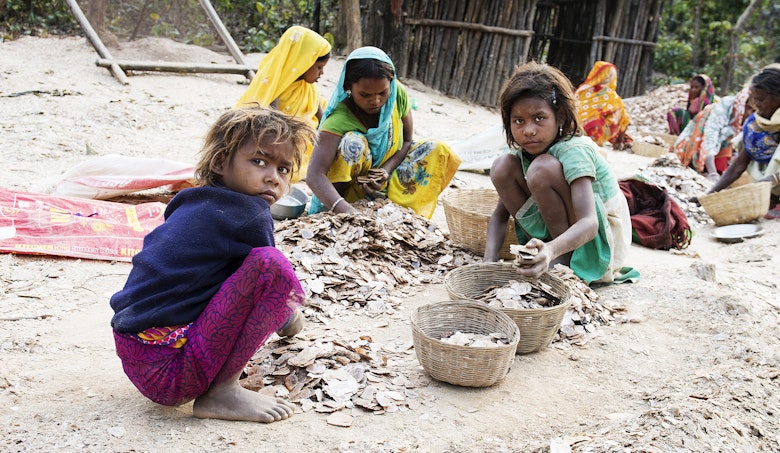Report: Beauty and a beast
Report: Child labour in India for sparkling cars and cosmetics.
Mica
Mica is a mineral. It provides for the sparkling effect of car’s bodyworks. Moreover, it is a regular ingredient in cosmetics for nails, eyes, lips and faces.
Mica is named after its ability to reflect and refract light. Other qualities include its resistance to high temperatures and its ability to insulate against electricity. Mica has a crystalline and layered structure and can be split into very thin sheets.
Mica is mined mostly in India and China, followed by the US and Europe. In India some three quarters of the mining takes place around the border of Jharkhand State and Bihar State, and around 90% of the mining is illegal. The Indian states of Jharkhand and Bihar are home to the world’s largest mica mining area, and account for an estimated 25% of the world’s total production.
Jharkhand and Bihar are among the Indian states with the highest poverty rates, and literacy and school attendance are also below average. Within the main mica mining area of Jharkhand/Bihar the illiteracy rate of the rural population was 40% in 2011, according to India’s latest extensive Census survey. Poverty and illiteracy are root causes of child labour.
Mica use globally can be broken down into three categories:
- Mica as pearlescent pigment: Pearlescent pigments are added to paint/coatings, cosmetics, plastics and ink with the main purpose of creating a sparkling effect. Manufacturers of pearlescent pigments account for 60% of the tonnages and export value of Jharkhand and Bihar.
- Mica in the electronics sector: Mica is used in hair dryers and toasters, and for electrical insulation of cables, capacitors (originally known as condensers) and commutators.
- Mica as a functional filler: Mica is used in plasterboard, fibre cement, oil-well drilling fluids, plastics, shampoos and conditioners. As well as coatings there are several mica uses in the automotive sector, including tyres, bitumen foils, brake pads and clutches.
This report focuses on child labour in Jharkhand/Bihar for mica mining and processing, and the role of Dutch companies and main manufacturers of pearlescent pigments globally.

